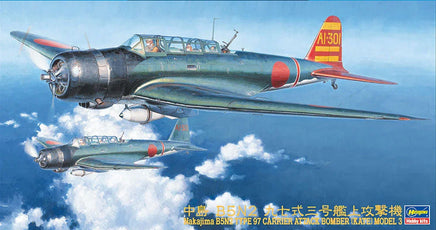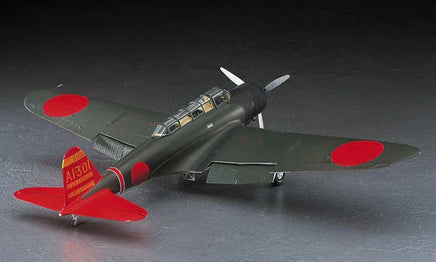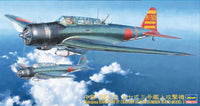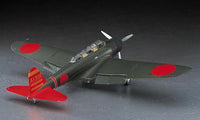In 1935, the Imperial Japanese Navy ordered Mitsubishi and Nakajima to build a prototype aircraft called the Ju-Shi Carrier Attack Aircraft.
The Navy's requirements were far more stringent than those of the Type 96 carrier-based attack aircraft, which had just been adopted at the time, and Nakajima, which received the request to build a prototype, had been defeated by Mitsubishi in competitions for all major naval aircraft models, so it put its entire company on the line and took on the development.
The Type 97 carrier-based attack aircraft, incorporating many innovative features, was the first low-wing monoplane carrier-based attack aircraft of the Imperial Japanese Navy with an all-metal monocoque structure.
It adopted revolutionary hydraulic retractable main landing gear, and the fuselage width was narrowest near the cockpit for a three-seater aircraft. The adoption of upward-folding main wings shortened the overall width, allowing for a smaller storage space inside the aircraft carrier. The propeller was an all-metal two-stage variable-pitch three-blade propeller, which efficiently exerted engine power according to each situation, whether it was takeoff, climbing, cruising, or at high speed, and performance was greatly improved.
On November 16, 1937, it was officially adopted as the Type 97 No. 1 carrier-based attack aircraft (B5N1). It was equipped with the "Hikari" engine, which was 300 hp less powerful than the "Sakae" engine that was originally planned , but its performance exceeded the Navy's requirements.
In the autumn of 1938, the "Sakae" engine was ready for practical use, and this was installed in the aircraft.
In December 1939, it was officially adopted as the Type 97 No. 3 carrier-based attack aircraft (B5N2), and mass production at Nakajima was switched to the Type 3.
In December 1941, the Type 97 Carrier Attack Bomber participated in the attack on Pearl Harbor, which marked the start of the Pacific War. The Type 97 Carrier Attack Bomber, which was carried by six aircraft carriers, achieved great success by inflicting fatal damage on the ships of the US Pacific Fleet with concentrated bomb and torpedo attacks . Of particular note was the successful torpedo attack at shallow depths, where torpedoes were thought to be impossible, due to the high performance of this aircraft.
After the Hawaii operation, the Type 97 carrier attack planes, which were carried on the First Air Fleet's aircraft carriers, served in the Solomon Islands, the Southwest Pacific, the Indian Ocean, and elsewhere, alongside the Zero fighter and Type 99 carrier bomber.
-
Crew: 3
-
Width: 15.518m
-
Length: 10.3m
-
Height: 3.7m
-
Engine: Nakajima "Sakae" Type 11 (air-cooled double row radial 14 cylinder)
-
Takeoff power: 1,000hp
-
Maximum speed: 378km/h (altitude 3,600m)
-
Armament: 7.7mm machine gun (upper rear fuselage)
-
Bombs: 800kg x 1 / 250kg x 2 / 60kg x 6 / 30kg x 6
- Torpedoes: 800kg x 1




